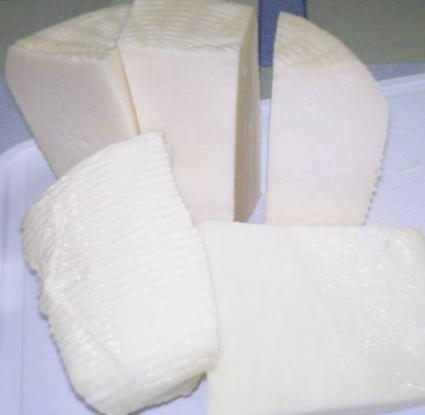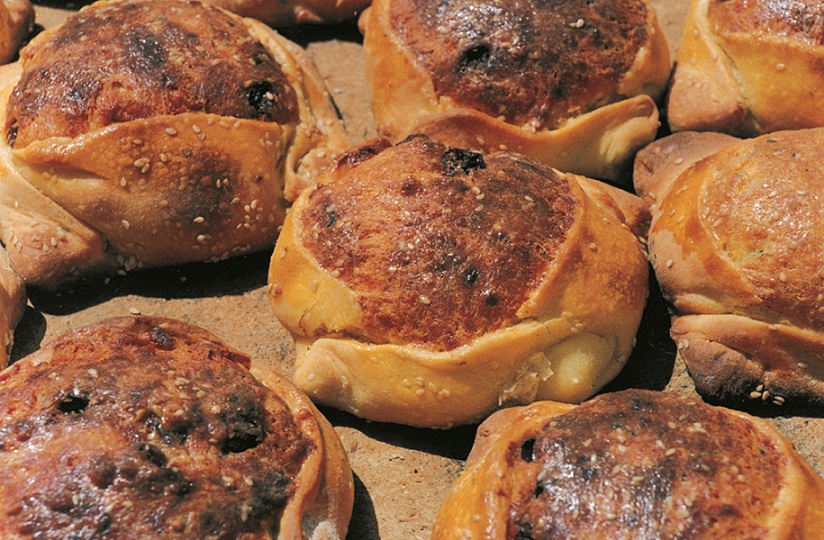Paphitiko tyri (cheese) is made in Paphos district during Easter time from sheep's or goat's milk, or a mixture of these and used for the preparation of flaounes, an Easter delicacy.
Name - Origin
PaPaphitiko tyri (cheese) is made during Easter from sheep's or goat's milk, or a mixture of these (Ionas, 2001) and used for the preparation of flaounes, an Easter delicacy. It has a hard texture and a yellowish appearance with characteristic streaks of the 'talari' (weaved basket) in which it is formed (MANRE, 2010).
As it is used in the preparation of Easter flaouna, it is sometimes called flaouna cheese.
Milk is heated and then rennet is added. After it curdles, it is cut into pieces and stirred for 5-10 minutes. The curd is then gradually reheated by stirring for 30 to 45 minutes. It is, then, transferred to 'talaria' (s. talari, pl. talaria, weaved baskets made of sprigs of the rush plant - Juncus Sp.) and pressed by hand until each talari is full. The cheese is turned over 1-2 times to drain and then, the talaria are placed with hot whey in a cauldron for 30 minutes to cook. The talaria are then drained and salted with coarse salt. The cheese is then removed from the talaria and the maturing process continues for 4-5 days.
Functional and symbolic role
It is consumed with bread but is mainly used in the preparation of Easter flaounes (hence, it is sometimes called flaouna cheese).
Paphitiko tyri is rich in fat and very tasty. Any cheese left over after making the flaounes, was coated with wax to be preserved and consumed later as a mezé (Igoumenidou-Rizopoulou E. 2005).
It is linked to the production of Easter flaounes.
Additional information and bibliography
"Many excellent cheeses are produced in the villages of Akanthous and Kefalon and some villages of Paphos" (Archim. Kyprianos, 1788). From ancient times until today, Paphitiko tyri is produced mainly in the period from February to April, when there is an abundance of milk.
Archimandrite Kyprianou (1788). History Chronological History of the Island of Cyprus, first edition 1788 Nicosia, Palingenesia Publications, reprint 1971: 363-9.
Rizopoulou-Igoumenidou E. (2005) ""Τα γαλακτοκομικά προϊόντα στον ετήσιο κύκλο της παραδοσιακής ζωής στην Κύπρο." Στο: Η Ιστορία του Ελληνικού Γάλακτος και των Προϊόντων του. Athens, Cultural Foundation of the Piraeus Bank Group.
Ionas, I. (2001). Παραδοσιακά επαγγέλματα της Κύπρου (Publications of the Centre for Scientific Research XXXVII), Centre for Scientific Research, Nicosia.
Ministry of Agriculture, Natural Resources and Environment, Department of Agriculture (2010).Gastronomic Map of Cyprus, Press and Information Office, Nicosia.
Stalo Lazarou, Antonia Matala, Demetra Demetriou





